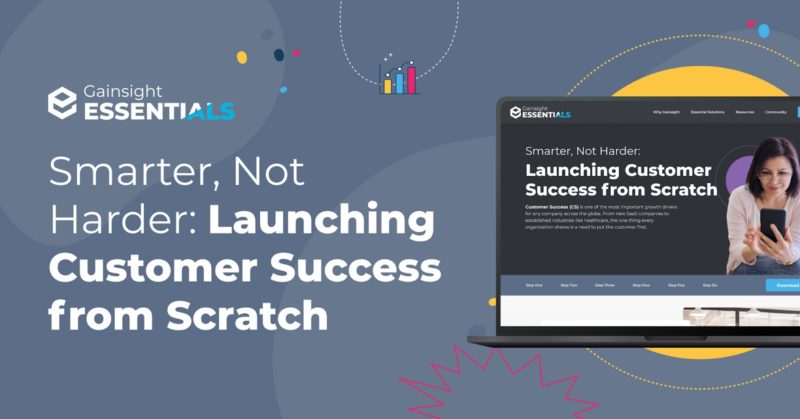Creating alignment in any organization is hard.
For Customer Success (CS) teams, creating and managing alignment is essential at all stages of your CS evolution. At the onset, you need to create organization-wide alignment around what customer success will mean and the impact it should make on your business.
Once that critical alignment milestone is reached, CS leaders still have the task of aligning their CS and cross-functional team members to processes, protocols, programs, and activities that allow you to fulfill your customer success charter. And, all of it gets more difficult (and more critical) as you scale.
That’s why you should consider maintaining a customer success handbook to scale knowledge transfer for new employees and set standards that everyone in your organization can follow to deliver on customer outcomes.
What is a customer success handbook?
Much like an employee handbook, your CS handbook is a central repository of your customer success policies, procedures, guidelines and more. Here are some of the biggest benefits:
- Maintain alignment: A handbook helps you share your vision and your system with peers, stakeholders, and team members. This tool helps you literally get everyone on the same page.
- New hire onboarding: Reduce time-to-activation for new or promoted team members by providing them a guide for their new role.
- Document best practices: A handbook is a living document to capture lessons learned and continually improving practices.
How should a customer success handbook be developed?
The idea of creating a handbook could seem daunting IF you try to develop it all on your own. A good handbook should be crowdsourced. Different CS members can pitch in, collaborate and validate what makes it into the customer success handbook.
Here are some key considerations to creating your first customer success handbook:
- Understand your goals for creating a handbook; this will help you explain the initiative to your team.
- Create an outline of a team handbook. Include only major sections that are relevant immediately, such as Mission, Teams, Processes, Programs, Resources.
- Present and discuss the outline in a team meeting and explain your goals.
- Schedule a separate meeting to create or improve your team’s mission statement or charter. This sets the tone for the collaborative process of assembling the handbook.
- Have managers and individuals document the definition of their functions and responsibilities in the handbook.
- Review sections of the handbook and make improvements in team meetings.
- Ask team members to log change requests either as comments in the book or in another system.
- Have new team members review the handbook as part of their onboarding and ask them for improvements or corrections.
- Have new team or newly promoted team members process change requests.
- If you’re using customer success software as part of your program, it’s also important to regularly check to make sure that policies and protocols are in alignment between your system and your handbook.
Wiki’s are a great tool to leverage when creating and maintaining your customer success handbook because they allow for easy search and browsing. You can also use something as simple as a shared document in order to start aggregating information and starting to consistently format it for multiple team members to access.
Where can I see an example of a customer success handbook?
One of our favorite examples of a customer success handbook is from GitLab. As a fully remote company with no offices, GitLab embraced transparency early as a way to align teams. Each department at GitLab has its own section in the company handbook. You can review the Gitlab customer success handbook in its entirety, but here’s an outline of its major sections:
- Mission Statement
- Vision Page
- Department Initiatives
- Customer Success Playbooks
- Customer Terrain Mapping Engagements
- Customer Success Groups
- Other Resources
In addition to the GitLab example Gainsight’s community is full of customers, partners and experts who are constantly sharing their expertise on a variety of topics, including foundational tools like the CS handbook.
What’s the best way to get started?
There’s no right way to begin. A great first step is to bring your team together to create or update your customer success charter in the handbook. This can help build the group’s understanding and importance of the tool, and is a great way to reculture a group.
Also remember that your customer success handbook is more art than science. Get started, but find what works best for you and your team. You’re going to modify it along, but it will be a great reference and guide for your customer-centered organization along the way.

